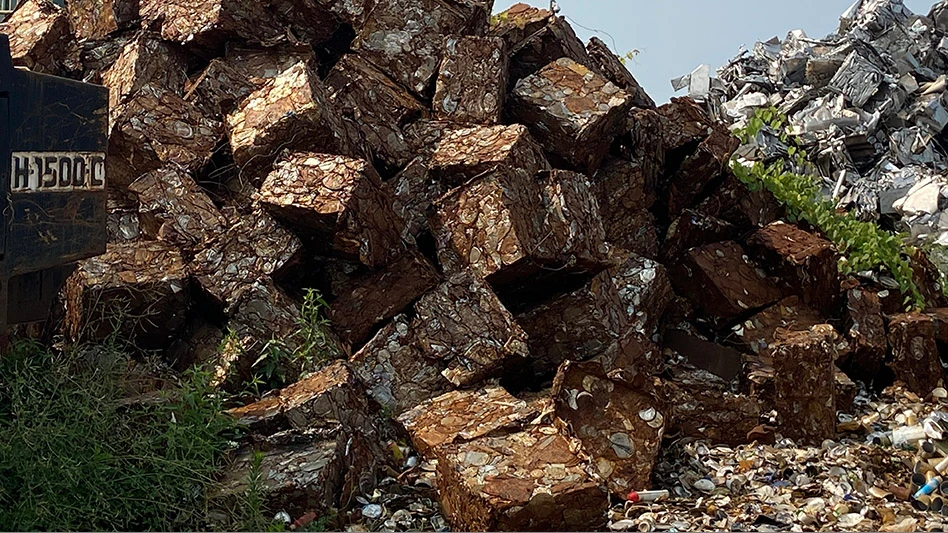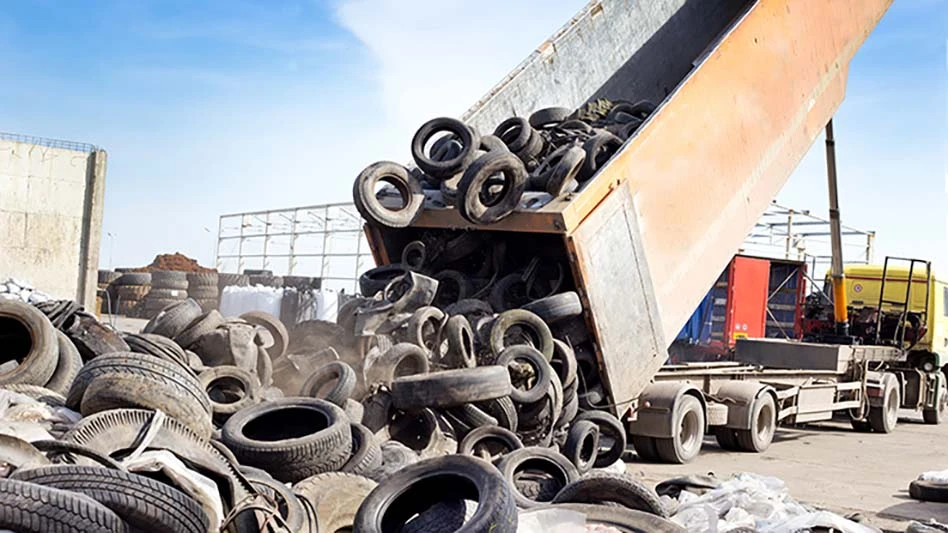
Recycling Today archives
With July prices that stubbornly refused to rebound even after declining throughout the spring, ferrous scrap processors have spent the summer trying to maintain flows and margins.
In terms of pricing, the value of No. 2 shredded scrap as tracked by Pittsburgh-based Management Science Associates (MSA) and its Raw Material Data Aggregation Service (RMDAS), fell below $400 in July for the first time since December of last year.
Pricing tracked by Davis Index for No. 1 and 2 heavy melting steel (HMS) bulk buys in July shipped from New York and Los Angeles seems to show overseas buyers in no mood to start bidding more.
Bulk cargoes sent from New York (fob, or freight on board) checked in with a $340.50-per-ton average price in July, according to Davis Index, and by the end of the month that price had sunk closer to $327 per ton.
Processors contacted by Recycling Today say the subpar pricing has made a dent in scrap flows, most notably in the case of shredder feedstock like auto hulks. “Volumes are off a lot in July,” says a recycler whose company operates multiple shredding plants.
Another processor whose firm operates shredders says any benefit from summer weather has been offset by low scale prices. “Certainly, warmer weather helps flow, but the main driver [for less volume into shredders] is ferrous pricing,” he says.
Although auto salvage firms, small dealers and some peddlers may be holding on to scrap, the construction and demolition sectors seem to be providing a steadier flow of obsolete grades.
“Seems like construction projects are still ample around our region,” a processor in the Midwest says, adding that because of several weather events this summer, there is the potential to generate more scrap material.
“There is a good amount of demo and new construction going on,” a processor in the Great Lakes region says in terms of scrap generation in his city, but it has not been enough to make up for overall shortfalls in generation. “Every commodity for me, personally, has been down 20 to 25 percent [in volume], with July being the worst, as it typically is.”
Collectively, processors are waiting for a point where demand begins to exceed supply (which is becoming scarcer), but most are not willing to say that means a sudden rebound. “I’d expect August [pricing] to be worst case sideways and put a firm floor on things so we can recover a little,” one shredder operator says.
While in the U.S., the Great Lakes region processor says demand has been steady, higher offers from overseas buyers that could spur upward bidding continue to be few and far between.
In the first two days of August, prices for bulk cargoes to the Indian port of Nhava Sheva rose by about $5 per ton, and at least one Turkish buyer in early August paid about $2 per ton more than the prevailing July price.
For scrap yard scale houses to become busier again, those bids likely will need to rise some more. However, the most recent figures from the Brussels-based World Steel Association (Worldsteel) do not necessarily offer encouragement.
This June, Worldsteel says producers in its 63 member countries made 161.6 million tons of steel. That figure represents a 2.8 million-ton drop of 5.1 percent compared with the prior month and is 0.1 percent less than the amount of steel produced in June of last year.
Latest from Recycling Today
- Lautenbach Recycling names business development manager
- Sebright Products partners with German waste management equipment company
- WasteExpo transitions to biennial format for enhanced experiences
- Study highlights progress, challenges in meeting PCR goals for packaging
- Washington legislature passes EPR bill
- PureCycle makes progress on use of PureFive resin in film trials
- New copper alloy achieves unprecedented high-temperature performance
- Gränges boosts profits and sales volume in Q1 2025





